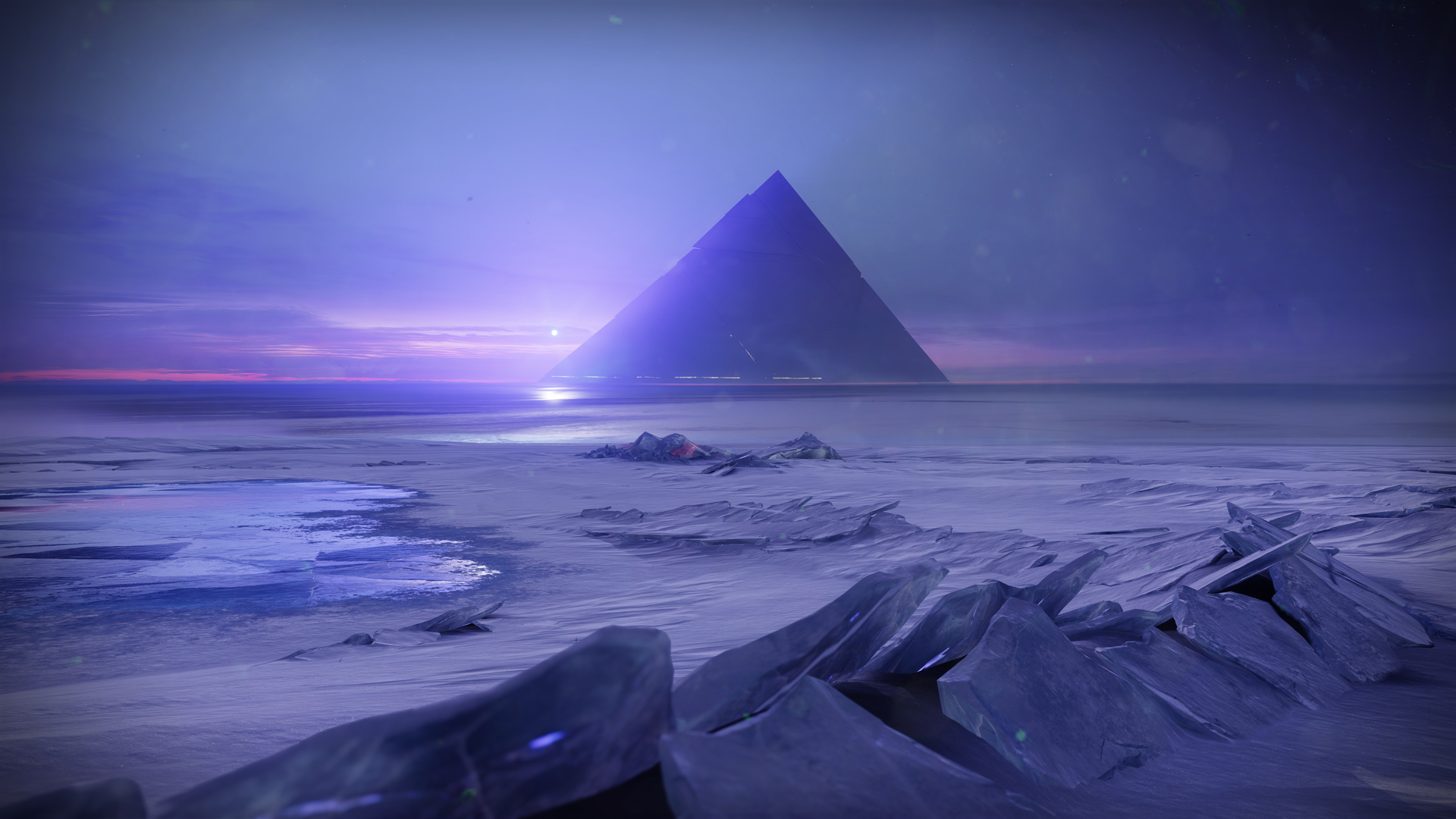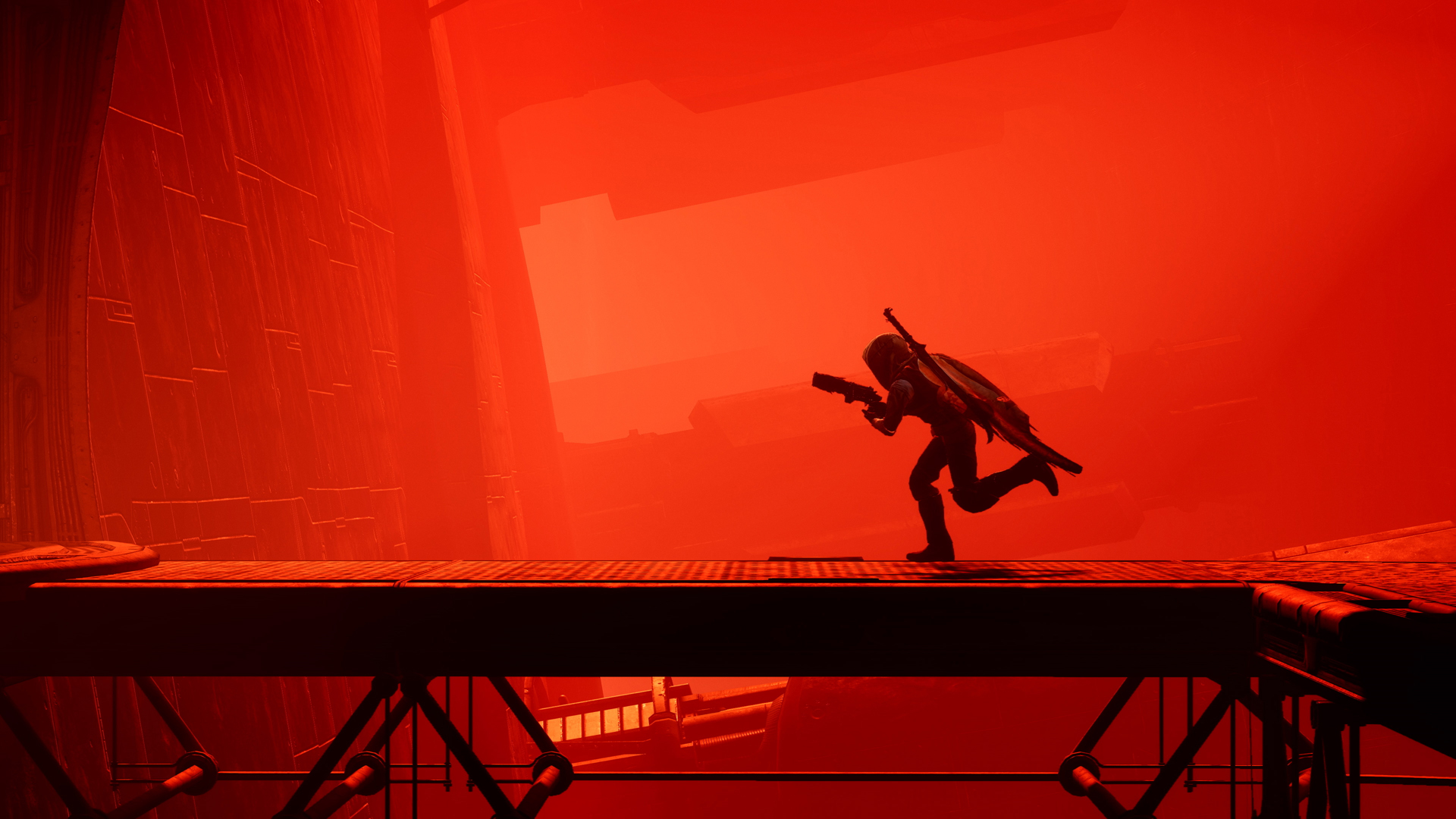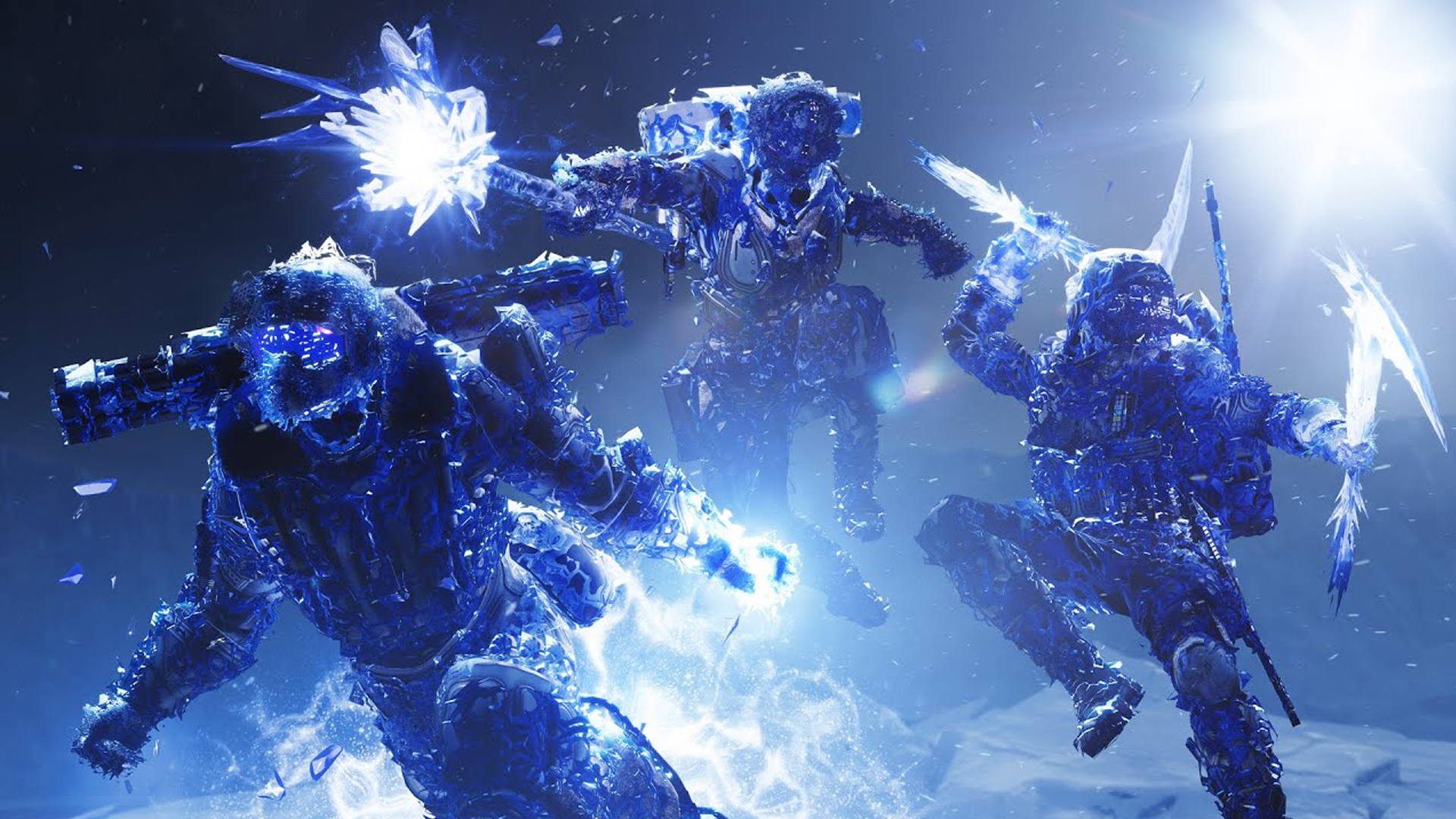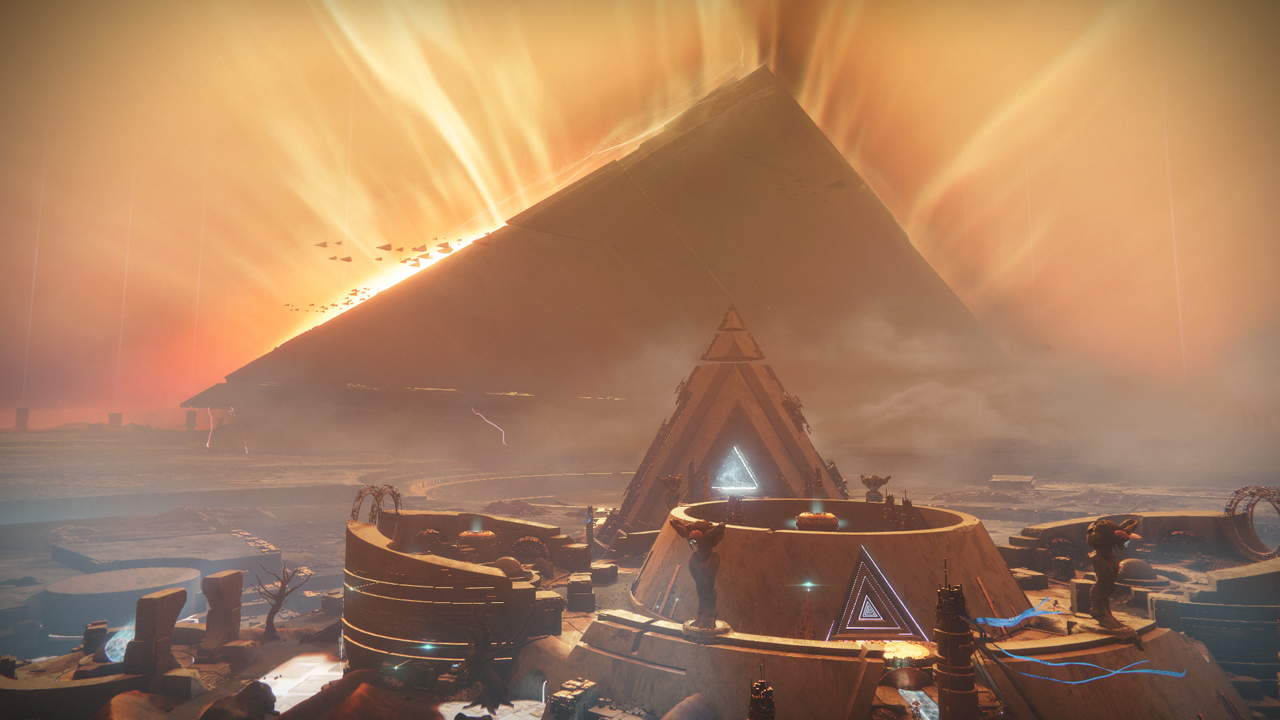Destiny 2: Beyond Light lore made easy: what is the Darkness and what does it want with you?
Destiny 2: Beyond Light pulls the The Darkness out of the shadows, here's what that will mean for the new expansion

The Darkness in Destiny has always been elusive. Since the franchise's debut in 2014, players have been told The Darkness is the antagonistic force of the entire universe, but how it manifests has always been... vague. In Destiny 2 lore, Guardians are known to wield the Light, a power that grants them eternal life and world-shattering powers. This power was gifted to them by the omnipotent Traveller. However, the opposite side of that coin hadn't manifested itself until very recently. In Destiny 2: Season of Arrivals, the physical Darkness finally graced our solar system in the form of the long-teased pyramid ships. If you're a casual player or one who prefers to ignore the lorebooks, what that arrival means might remain fuzzy.
That's where we have you covered. In Destiny 2: Beyond Light, Guardians will directly interact with the Darkness for the first time as they begin to wield it. But before you get out there freezing your foes all willy-nilly, perhaps it's time to learn a little bit about the paracausal power we're about to get our hands on... and why the Darkness wants us to start using it.
What is the Darkness in Destiny 2?

In simple terms, the Darkness is the counterpoint to the Light. These two powers act as a warring set of philosophical, and even mathematical, standpoints – principles more than gods. However, these are physical and manifest in our universe. They have warred over planets and civilisations over and over again. Even on Earth, they've met. The Collapse was a cataclysmic event in the Destiny timeline that saw the Darkness nearly wipe out all life in our solar system. However, due to a last-ditch effort, the Traveller somehow repelled the Darkness before going into stasis after creating the Guardians.
The best text we have to understand these two powers is the Unveiling lorebook. This was seemingly handed to the player by the Darkness to help them understand the history of the universe and its motives. It's important to keep in mind that Destiny is full of unreliable narrators, so this story is what the Darkness would like us to know as opposed to what might be the truth.
In this book, the Darkness explains that before anything existed, there were two entities: the Gardener [the Light] and the Winnower [the Darkness]. The Gardner would plant seeds, and then the Winnower would reap the weak. This was their 'game'. This game is how we come to explain the creation of life in the Destiny universe.
These are the rules of the game:
- "Rule One. A living flower with less than two living neighbours is cut off. It dies."
- "Rule Two. A living flower with two or three living neighbours is connected. It lives."
- "Rule Three. A living flower with more than three living neighbours is starved and overcrowded. It dies."
- "Rule Four. A dead flower with exactly three living neighbours is reborn. It springs back to life."
- "The only play permitted in the game is the arrangement of the initial flowers."
Essentially, this game simulated all life that could ever be, and all the things that could ever happen in the universe. However, it had a problem: the game always ends the same way. Eventually, despite all the variations between beginning and end, the game would always end with the same form of life at the end. It's believed that this 'Final Shape', the form of life that would always take over a simulation no matter the variable moves, was the Vex.
Weekly digests, tales from the communities you love, and more
The Winnower thought this inevitability was beautiful, but it angered the Gardener. To try and change the outcome of the game, the Gardener introduced a new rule. One to reward complexity, and stop gridlock. A rule separate from the rest of the rules.
To implement this rule, the Gardener inserted themselves into the game, able to influence the rules from within. The Darkness followed suit. The two then warred within, their fight and the subsequent destruction resulting in the creation of the universe. The Darkness and the Light now played in the cosmos. The game became real.
That's all well and good, but what does the Darkness want?

Simply put, the Light represents life and the Darkness represents death. However, in the Unveiling lorebook, the Darkness makes the argument that existence is the only thing that matters. You can't suffer when you do not exist and to exist is all that matters. To put it in the Darkness' words: “Those who exist have moral worth, and those who do not have none.”
"Those who cannot claim and hold existence do not deserve it. This is the true and only divination, a game whose losers are not just forgotten but are never born at all."
The Darkness is only interested in that which is alive and continues to be alive. To lose the game means you no longer exist and are not real. All that remains is all that deserves to be. A universe whittling itself down to an apex predator.
Right... but what does it want with me?

The Darkness admits that it never would have revived us from the dead as the Traveller did. We failed to exist, so it didn't matter. However, now that we exist once more thanks to the Traveller, The Darkness is uniquely interested in us. We transcend the previous inevitable winners, the Vex, because we are not bound by cause and effect. We are paracausal; in essence, beings not bound by the rules of the universe. The Traveller gifted us power and we threw the previously established truths in the game into chaos.
This means we have a real shot at being a new 'Final Design'. The top of the food chain. Because of that, The Darkness thinks we are "majestic". It concludes, due to our immortality: "Existence is a test that most will fail. Would you not count yourself among the victorious few?"
So, The Darkness wants to turn us. Imbue its power into us making us even stronger. The final shape of the universe. It figures if the Traveller has gotten hands-on with us, it can too. In essence, the fight over us between two universal powers is likely the fight for the universe.
So what does that mean in Destiny 2: Beyond Light?

The Pyramid ships have been a part of our solar system for several months. They've been reaching out to us, rather than trying to reap all life, which is quite different to the destruction the Darkness caused the first time it visited our solar system.
It's clear the Darkness is fascinated by us, and if its motives are as told, it wants to see what we will do. The Darkness has already begun to help us with the gift of the Ruinous Effigy gun this season. In Beyond Light, with the introduction of the Stasis subclass, the Darkness is imbuing its power directly into us. The Stranger, Eris and Drifter appear to be interested in wielding the Darkness' gift as a means to an end to ultimately destroy it.
Whether we can resist temptation and continue to wield the Darkness to defeat itself remains to be seen. If not, we are headed towards an ideological war. The real question now is, will the Guardians be united to one side or split between two powers? The future battle between the Light and Darkness is brewing, and Beyond Light is going to be a major step towards that. How our relationship grows with the Darkness is likely to decide everything in the Destiny universe.
Destiny 2: Beyond Light releases November 10 for PC, PS4, PS5, Stadia, Xbox One, and Xbox Series X.
Patrick Dane is the former Guides Editor at TechRadar. He is now a freelance games journalist writing for sites and publications such as GamesRadar, Metro, IGN, Eurogamer, PC Gamer, and the International Business Times, among others. He was also once the Managing Editor for Bleeding Cool.


